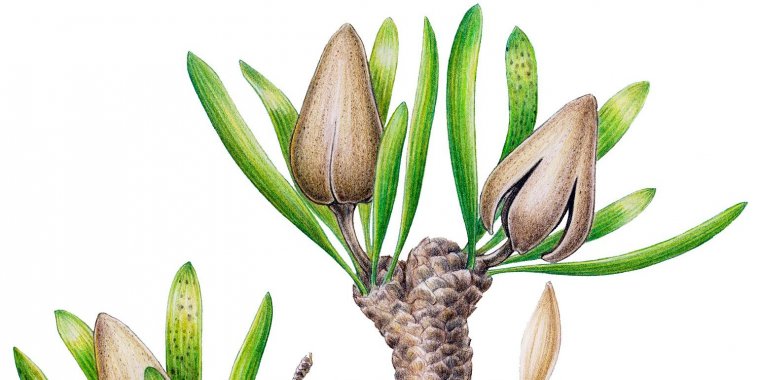| News / Science News |
Paleontologists find fossil relative of Ginkgo biloba
A discovery of well-preserved fossil plants by paleontologists from the United States, China, Japan, Russia and Mongolia has allowed researchers to identify a distant relative of the living plant Ginkgo biloba.

Reconstruction of the ancient, dinosaur-era relative of today's Ginkgo biloba plant. ![]()
The fossils, from the species Umaltolepis mongoliensis, date back to the early Cretaceous Period (some 100-125 million years ago). Scientists discovered the fossils in ancient peat deposits at the Tevshiin Govi mine in the steppes of central Mongolia.
Scientists had previously uncovered fossils of U. mongoliensis, but those were in poor condition, making them difficult to study. Hundreds of better-preserved new fossils show that features of the stems and leaves are similar to those of living ginkgo.
However, the seed-bearing structures are not like those of today's ginkgo tree, Herendeen says. Ginkgo has large seeds with a fleshy outer covering, but U. mongoliensis has small, winged seeds.
As they developed, U. mongoliensis seeds were protected inside a tough, resinous, umbrella-like outer covering, which stayed almost completely closed, opening only to release the seeds.
The key to determining how U. mongoliensis is related to other seed plants lies in understanding its strange seed-bearing capsules.
While the U. mongoliensis seeds are dissimilar to those of any other living or extinct plant, preliminary comparisons connect them with the seed-bearing structures of two groups of extinct plants that may be part of the ginkgo lineage.
These comparisons and the unique features of U. mongoliensis indicate that ginkgo is the last living member of a group of plants that was much more diverse and important in the past. (NSF)
YOU MAY ALSO LIKE



